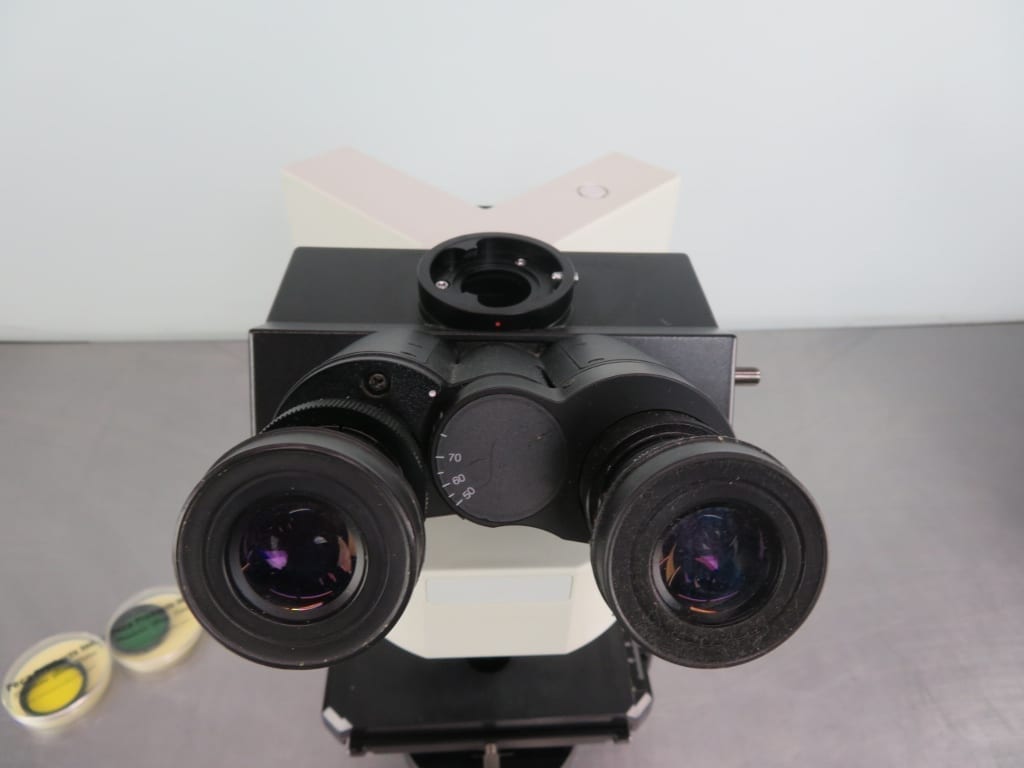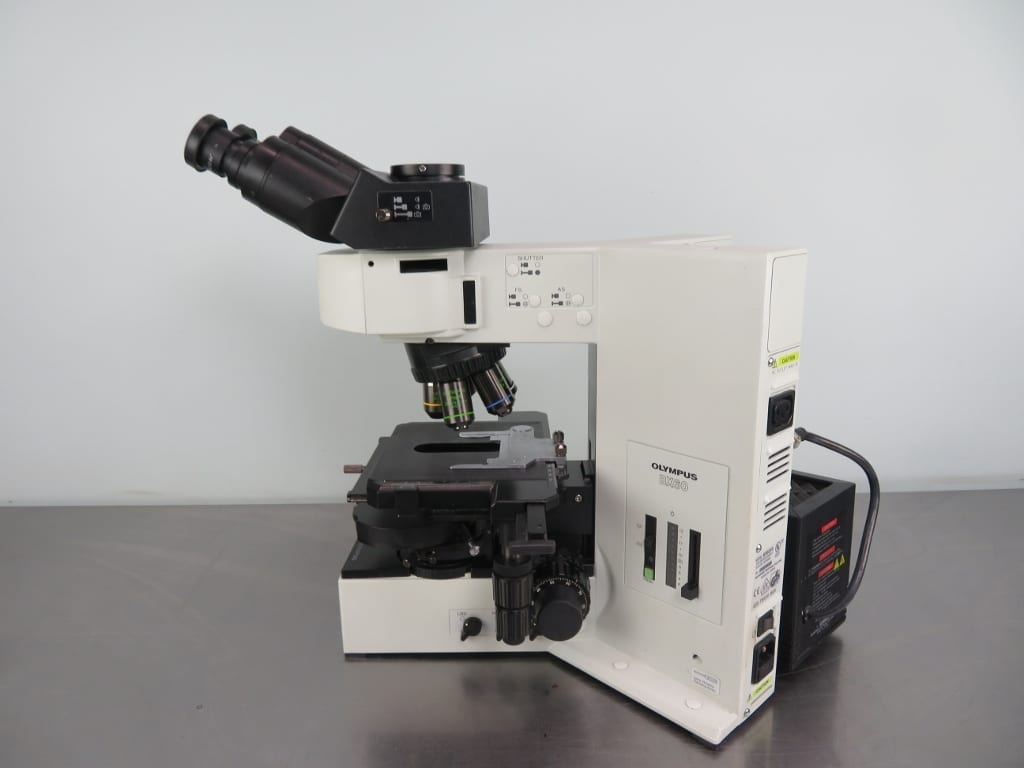


I have the bulb's photo-level (9V of it's maximum 12) button set to on routinely (the vast majority of my use is brightfield) as the full 12V is very bright indeed - all filters engaged still requires additional ND filters in the 3-filter swing-in/out filter cassette that I use attached to the top of the light-port! In this case I usually set my camera to mono to remove colour-cast from images - the eyepiece image is not a problem in this situation.


The filters are ND and used to change the lamp's brightness without chaging the voltage and therefore colour of light coming from the bulb - the daylight (blue) for reducing the yellow-red tinge of the bulb - depends on preference and which particular bulb you're using - I leave this filter in all the time except when I need maximum light, usually for fully-crossed polarisation with weakly birefringent structures within plant tissue. They're used exactly the same way other than the above 'extras' of the BX50. High-rigidity frame accepts heavy attachments.I have a BX50, and nefore this a BX40 - they're very similar, and I'd say identical in all but the 100W halogen lamp with the 9V photo-button, slide-in/out capability of the NX50's nosepiece-mount, and the swing-in/out built-in ND and daylight filters filters.Inward-facing sextuplet revolving nosepiece accepts insertion of Nomarski DIC analyzer slider.Silky-smooth 1um sensitivity fine focus for precise adjustment at high magnification.Built-in filters(ND6, ND25,LBD) with flip in mounts.Extra-bright 12V/100W halogen lamp for superior illumination for all transmitted light techniques or photomicrography.Extra bright 12V/100W halogen lamp illumination, three built-in filters and an extremely smooth 1um sensitivity fine focus are only a few of the features that help the BX50 meet a variety of needs. Offering superior performance covering applications from routine investigation to sophisticated research, the BX50 features the specifications to satisfy a wide range of observation requirements.


 0 kommentar(er)
0 kommentar(er)
